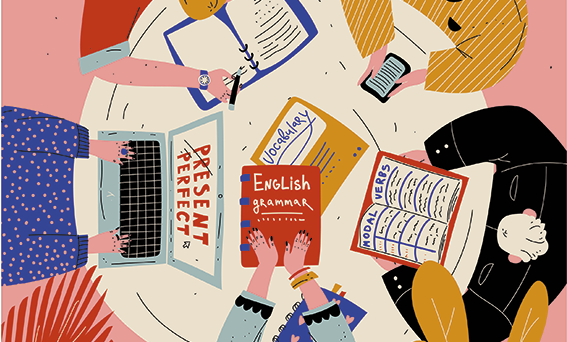January 2020 issue is out now...
We are heading into summer here in New Zealand and as we approach the end of the semester, we are dealing with results. I am always interested in the student who didn’t quite achieve. What happened? Did they realise they were not going to get through? What could they have done about it? Did they fully understand the criteria they would be assessed on?

It is particularly striking here, because most of our students have come to one of the most remote parts of the world, either as refugees, or as international students, to move on academically and socially. Thirty years ago, that would have meant an immersion in the English language. Students would have had four or five hours in class followed by some homework and an evening with an English-speaking homestay. These days, unless the learner really wants it, the only contact with the language is in the classroom. Online contacts tend to be in the mother tongue and with social media taking up such a large part of waking hours, a lot of time is dedicated to non-English activities.
This is a problem which is only going to get bigger. Parents are investing millions of pounds and dollars in an English medium education. At a cricket match in provincial New Zealand last weekend I saw a British university advertising alongside banks, automobile companies and food chains. Why would they do that unless they sensed there was a market? So what is the product being sold? Presumably a degree or some other form of post-secondary qualification. To apply for that qualification, what will potential candidates have to show? This is where it gets difficult. Finding a common core of skills, language and lexis which will be of use, irrespective of what course they go on to study, is difficult.
The theme of this issue is English for Academic Purposes and you will find articles looking at it from a wide range of standpoints. Before the EAP section, there are two articles covering topics which are relevant to all kinds of teaching. The first one looks at ways of using the last five minutes of a lesson in an active, engaging way. The ideas help learners think about their learning, reflect on their progress and take over some of the responsibility for what is taking place in class. The second article considers ways of making sure our learners are in the best possible mental shape. To do this, it is important that the atmosphere in the classroom is positive and that solid relationships are formed between classmates and the teacher.
Coming to the end of the year makes all of us reflect on what has happened in our classes and I think what has struck me the most this year is how much we need to understand our learners’ background and culture. I, for example, often set work to be done outside class to consolidate or practise what has gone on in class. It doesn’t necessarily have to be checked, yet some students will only do such work if it is checked. I also like students to use the workbook, which has an answer key, to continue to practise outside class, yet some students will happily buy a second-hand book with answers already filled in. They will breezily claim to have done the work themselves without realising that the previous owner didn’t necessarily get all the answers right! When it comes to classroom behaviour, punctuality, copying off classmates, working in groups in English, being prepared to make mistakes and leaving the room are just a few areas where we need to be both tolerant of learners’ backgrounds but also insistent on setting standards which are for the benefit of everyone. Every semester I think I’ve got it right, only to discover new challenges within the first few weeks. That’s why we love doing it and admit we never get it quite right.
Wherever you are, I hope 2020 is a great year for you.
Enjoy reading the issue.
Robert McLarty
Comments
Write a Comment
Comment Submitted